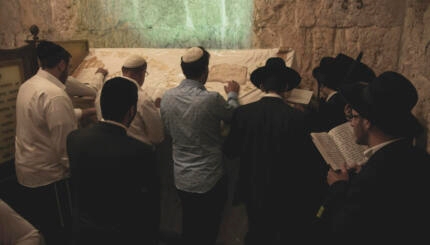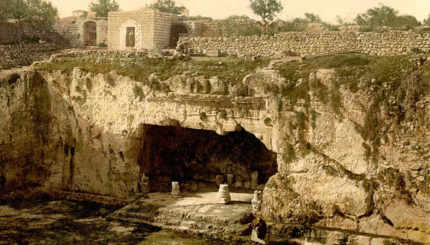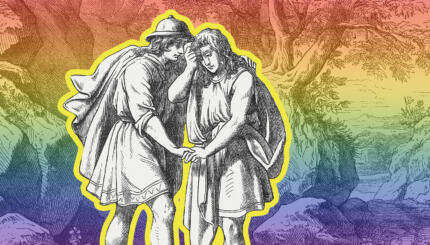Reprinted from Jewish Women in Historical Perspective, edited by Judith Baskin, 1991, with permission of the Wayne State University Press.
Work and Money: Who Was in Charge?
Although the husband promised to support his wife, it was not unusual for her to earn money on her own, most often through needlepoint work, especially embroidery. Usually, a wife was permitted to keep her earning for her own private use, although clauses in some marriage agreements stipulate that she provide her own clothing out of her earnings. It seems clear, however that these earnings were often a source of marital friction. In a petition to a rabbinical court in the twelfth century, a wife of a miller—also described as the daughter of a cantor—requests that her husband not have the right to tell her to do embroidery in the houses of other people and bring him her earnings, and if she does chose to work, she requests that she be permitted to retain her wages.
While the poorest women might find it necessary to sell wares or produce in the marketplace, a wealthy wife’s economic worth would probably be based on her property, including gifts and inheritances she received during her married life. There are many records of quite substantial women of property who handled their own financial affairs and represented themselves in court.
Marriages were far from being purely financial arrangements. Although brides were typically considerably younger than the husbands, through the passage of years and the development of shared concerns a marriage could grow into a warm and meaningful bond

Help us keep Jewish knowledge accessible to millions of people around the world.
Your donation to My Jewish Learning fuels endless journeys of Jewish discovery. With your help, My Jewish Learning can continue to provide nonstop opportunities for learning, connection and growth.
Divorce, When and Why
Still, divorce was by no means uncommon in this time and place of Jewish history. Not only did Islamic social custom accept divorce, but arranged marriages, geographic mobility, and the “greater attentiveness to a wife’s sufferings to be expected in a cosmopolitan bourgeois society” all contributed to marital strife. Some women emerged unscathed, particularly if they had favored the divorce and been supported by prosperous families, and remarriage was very common. Less fortunate divorcees were left in want and joined society’s other outcast females, the widowed and the deserted who were dependent on public charity.
A series of responsa [questions] to Maimonides tell of one deserted wife who was able to make herself independent by running a school, assisted by her elder son. Suddenly her husband reappeared and demanded that she give up the school, because it injured his dignity for his wife to be a teacher; and besides, he had no one to serve him. He insisted that she give up her teaching and stay with him, otherwise he demanded permission to take a second wife. The suggested solution is a divorce, after which, Maimonides says, “She will have disposition over herself, she may teach what she likes, and do what she likes”; but he rules that “if she stays with her husband, he has the right to forbid her to teach.”
Religious Education and Observance
The incident raises questions about Jewish women’s educations and their involvement in Jewish communal religious life: our schoolmistress had certainly received an elementary education from someone, possibly from her own unworthy husband, perhaps in her childhood home. Nor was she unique in her leaning, however limited.
A twelfth century Jewish traveler from Spain reported that a community leader in Baghdad, Samuel ben Ali, had no sons, but had a daughter who was an expert in the Scriptures and . He wrote that “she gives instructions in Scripture to young men through a window. She herself is within the building, whilst the disciples are below outside and do not see her.”
On the whole, however, in line with traditional rabbinic norms and the practice of the surrounding Moslem environment, significant learning among women was rare. In all of the Cairo genizah there is not a single piece of writing, religious or otherwise, that may be attributed to a woman.
Yet despite their general lack of learning, reference in genizah documents report that Jewish women were pious in their observance of the home-based laws incumbent upon them, and there are many indications that their attendance at synagogue was regular. Moreover, women also donated
scrolls for the service and oil and books for study and left legacies for the upkeep of the synagogue; and it is not farfetched to interpret these activities—found among Jewish women in Christian Europe, as well—as female strategies for imprinting her existence on a communal religious life from which they were otherwise barred. Still, it was as a mother of sons learned in Talmud that the Jewish woman in the Islamic world earned her spiritual reward in the eyes of her family and her society.


